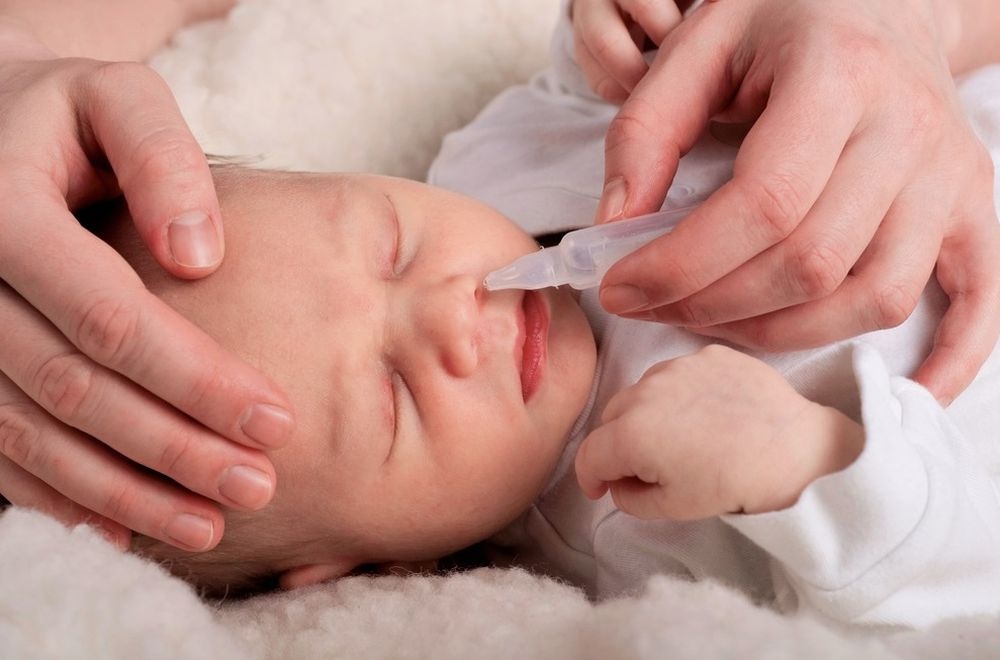
A runny nose in adults is rather a small trouble that can cause discomfort. But, for infants, such a problem is very serious. In babies, breathing is difficult and sleep is disturbed. Often, with such a problem, the baby refuses to eat. Therefore, nasal congestion in newborns is a rather serious problem that requires speedy solution.
The content of the article
- Symptoms and causes of a runny nose in infants
- How to treat a runny nose in a baby without temperature?
- How to treat an allergic runny nose in a baby?
- What to do if the baby has a runny nose and temperature?
- Treatment of a runny nose in infants
- How to wash your nose for a baby with a runny nose?
- Cold drops
- Folk treatment of a runny nose in infants
- Do the baby bathe with a runny nose?
- Can I walk with a baby with a runny nose?
- Hryminest of breast and newborns: advice to mothers
- Video. School of Dr. Komarovsky
Important: if the child does not cure the child in time, then he can develop into bronchitis. Therefore, you need to approach such a problem as responsibly as possible.
Symptoms and causes of a runny nose in infants
Symptoms of discharge in the nose in children under a year can be different. It all depends on the reasons that caused such an ailment. A runny nose in infants can be allergic. It can also be caused by viruses and bacteria.
Based on the above reasons, this problem is manifested by the following symptoms:
- Allergic runny nose. It is provoked by an allergen entering the body. It is characterized by swelling of the mucosa, accumulation of mucus in the nose and redness of the eyes
- A runny nose associated with the physiological feature of the body. The so -called physiological runny nose is manifested by the congestion of the nose with stress. Such stress includes a change in temperature, pungent odor, etc. Symptoms of such a runny nose are the sweating of the palms and trembling of the fingers on the hands
- Hrymile for SARS and other diseases. Very often, bacteria and viruses that fall into the fragile organism of the child can cause nasal discharge. At the same time, he may have a temperature, a cough, general lethargy and redness of the throat will appear
- Teething. One of the reasons for the appearance of discharge from the nose in children is teething. The inflammatory process in the gums can provoke the appearance of mucus in the nose
- Dry air indoors. If the room is dry and stale air in the nose of a child who spends a lot of time in such a room, crusts can form. They prevent normal breathing and can provoke the appearance of discharge in the nose
Important: since newborn children have very narrow nasal passages, they can sniff during sleep. If your child makes such sounds, then it is not at all necessary that his nose is clogged.
How to treat a runny nose in a baby without temperature?
Probably everyone heard such a phrase that " If you do not treat a runny nose, then it will pass after 7 days, and if you treat, then you can get rid of it in just a week". This phrase is appropriate for adults.
But for the child, especially the baby, help with a runny nose is necessary. Otherwise, there is a risk of developing it into more serious and chronic diseases.
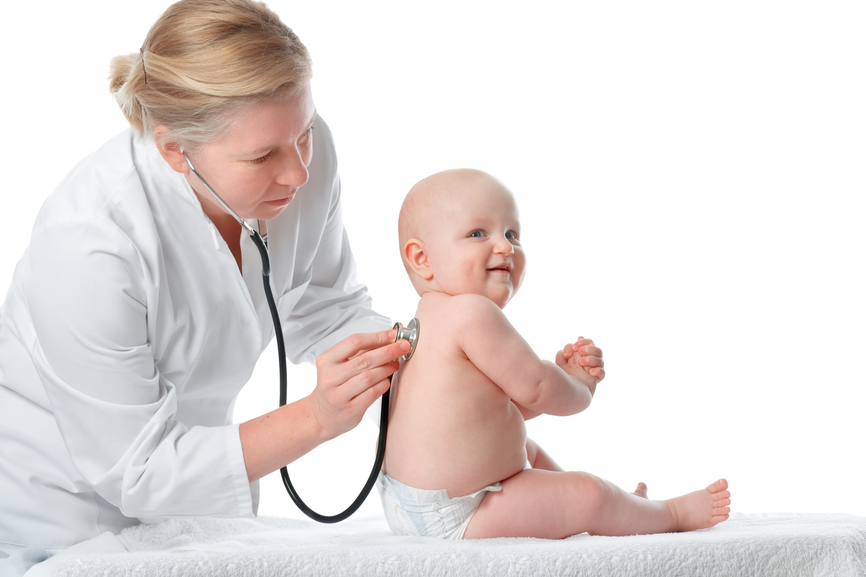
Even if the runny nose is not very strong, it must be treated under the supervision of a specialist
- And no need to bury breast milk in the nose, as many mothers do it with us. Yes, in such milk there are a lot of immunoglobulins that are able to help the body of the child. But, any milk, including breast, is an excellent environment for the development of viruses and bacteria
- If the runny nose proceeds without increasing temperature, then the first thing to do is to clean the child's nose. For infants, aspiration is good for this purpose. And for its implementation you can use such a complex as "Otrivin Baby"
- First, in the baby’s nose, you need to drip an isotonic salt solution or apply it to the nose with a spray (for children over a year), and then remove the discharge using a aspirator. This liquid does not cause discomfort in the child, but simply moisturizes the discharge in order to make it easy to extract
How to treat an allergic runny nose in a baby?
It is believed that in infants an allergic runny nose is very rare. Therefore, parents should consider allergies as the cause of a cold, in the very last case. Then, when the remaining reasons are excluded.
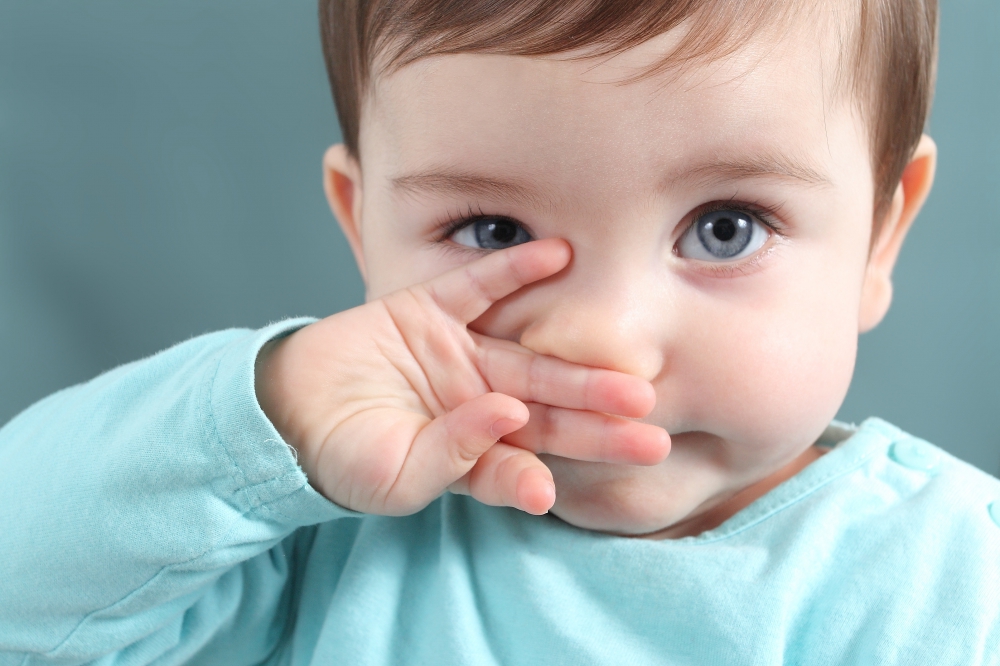
Distinguishing an allergic runny nose from any other is very simple
After all, his symptoms are:
- rash on the face and body
- liquid and transparent mucus from the nose
- witching eyes
- sneezing
But, the most significant symptom of an allergic runny nose is the lack of temperature. If a runny nose is caused by SARS, then the temperature necessarily rises. But, even if there is no temperature, but the runny nose is present, then most likely it is caused not by an allergy, but by the physiology of the child.
Important: an allergic runny nose can be made only by a qualified doctor. And only he will be able to choose the treatment of this ailment.
In any case, the treatment of such a runny nose consists in the search for allergens and their elimination. In a child, a runny nose can appear on dust, cigarette smoke, wool and smell of pets, and half -lines and blankets with a filler made of bird fluff.
Using antihistamines for the treatment of an allergic runny nose in infants, you need to be extremely careful and only after they are prescribed by the attending physician.
What to do if the baby has a runny nose and temperature?
Writ discharge from the nose, accompanied by fever, then you must immediately seek help from specialists.
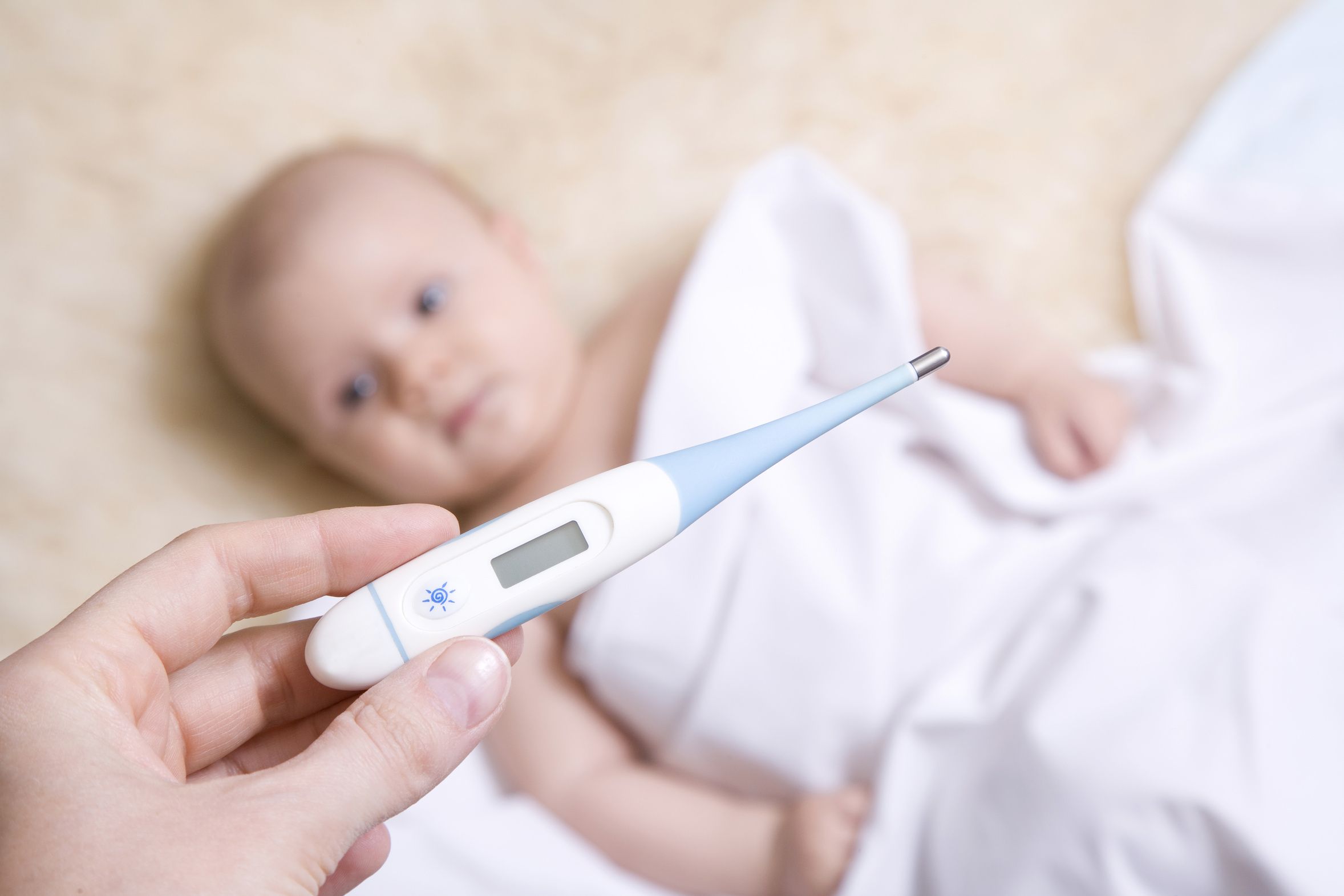
You can not self -medicate in this situation
- An increase in temperature is a symptom of an infectious disease. Only a professional doctor can make an accurate diagnosis. Infectious runny nose can quickly affect the lungs and bronchi. Therefore, it is important at the first symptoms of infection to seek qualified help
- As soon as the infants have discharge from the nose, parents should free the nose to the baby from mucus and rinse it with a physiological solution. In the room where the child is located, it is necessary to periodically do wet cleaning and ventilation
- At temperatures above 38 degrees, the baby needs to give an antipyretic drug that the doctor advises. They will help to cope with the heat of wiping well. For such a procedure, you need to prepare a solution of 1 part of alcohol and 2 parts of water. With it, you need to grind your legs, arms, wrists, armpits and part of the legs under the knee
- At high temperatures, candles have proven themselves well "Viferon". But, they can be put to a child only after consulting a doctor
Treatment of a runny nose in infants
The main task with a runny nose in a newborn is to clean the nasal passages from mucus.
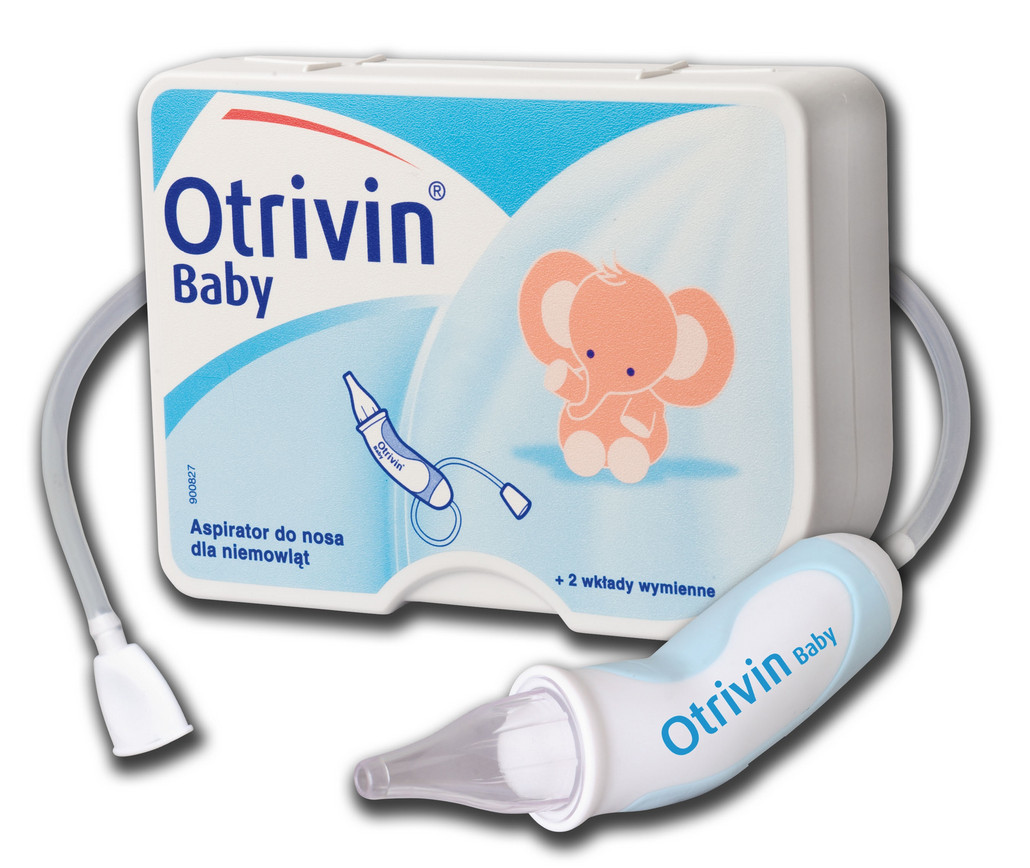
The easiest way to do this is with a special aspirator
- Since with a laid nose, the child very often refuses nutrition, everything must be done so that he eats. To do this, reduce the number of servings and the time between them. If the child refuses the chest, then milk can be given from a spoon or syringe
- Today in the pharmacy you can purchase various products for infants. But, even when using such funds, it is necessary to consult a doctor about their use. Infants are very good to cope with a runny nose drops
- And from such advertised moisturizing sprays from the cold as Aquamaris, "Otrivin Baby" etc. Better to refuse. In infants, they can provoke the development of purulent runny nose and otitis media
- Very often, mothers ask whether it is possible to use vasoconstrictors for the treatment of a runny nose in infants? It is possible, but only if the swelling of the nasal mucosa becomes very significant. You need to instill such funds very carefully, preventing an overdose
- The most popular vasoconstrictive drops for infants are "Nazol Baby" and "Nazivin" 0.01 % for infants
How to wash your nose for a baby with a runny nose?
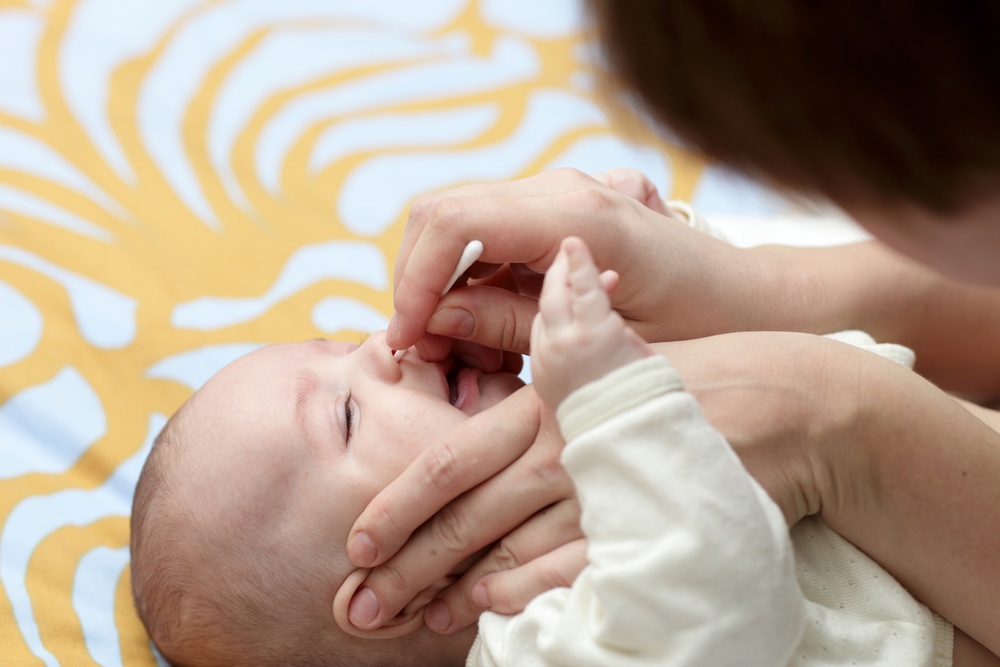
As mentioned above, the main task in treating a runny nose in newborn children is to clean the nasal passages
Rinse the nasal sinuses in babies extremely carefully. Do this with saline or other drugs.
Important: rinse your nose for a baby is possible no more than 5 times a day. If you do this more often, then you can harm the nasal mucosa.
Washing the nose of the baby (instruction):
- We remove the discharge from the nose. To do this, you can use a cotton flagella or a special aspirator
- Prepare a fluid for washing the nose. Follow the proportions (if you prepare such a liquid yourself) and dosage
- We collect the liquid in a syringe or a pipette
- We lay the child to one side and instill in each nostril alternately the required amount of prepared means
- You need to do this very carefully if you introduce a solution under pressure, that is, the risk of damage to the Eustachian tube
- In order for the liquid to get into the child’s mouth or ear, he needs to support his head. So that the solution does not flow out of the nose, you need to carefully throw your head back
- Follow the condition of the child, if he begins to choke, then it needs to be turned on the stomach and lightly tap on the back
Cold drops
| Moisturizing drugs | |
| Saline | 0.9% sodium solution of chloride. You need to instill extremely carefully. If it enters the Eustachian, the pipe can cause otitis media. |
| Aqualor | Moisturizing pharmaceuticals based on water and salts dissolved in it of various concentrations. Can only be used in the form of drops. Sprays are not suitable and contraindicated for treating a runny nose in infants. They can cause damage to nasal passages, irritation of the mucosa and edema. It is necessary to use such funds after consulting with the attending physician. |
| Aquamaris | |
| Quicks | |
| Salin | |
| Vasoconstrictor | |
| Otrivin - Baby | |
| Nazol Baby | The drug based on phenylefrin hydrochloride. I have proven itself well as a remedy for relieving a symptom, but is not used to treat a runny nose |
| Nazivin 0.01 % for infants | Preparations based on the base of oxymetazolin hydrochloride. The active substance in these funds is presented in a low concentration. Thanks to which they are very to use them to treat a runny nose in newborns. You can use 1-3 instillations per day. The maximum course of treatment is 5 days. |
| Nazivin Sensitiv | |
| Vibrocyl | The drug of combined antihistamine and vasoconstrictive effects. For children up to a year, children are instilled 1 drop 3-4 times a day |
| Drops with antiseptics | |
| Protorgol | Antiseptic drug based on silver ions. Since this metal is toxic, many doctors against its use to treat a runny nose in newborns. |
| Isofra | Framitin -based drug. Microbes that cause bacterial rhinitis kills. It is produced in the form of a spray, so when using the child, the solution must be typed in a pipette and enter 1-2 drops into each nostril. It is impossible to use in the form of a spray to infants. |
| Albucid | The drug for the sodium sulfacil. It is used to treat a runny nose caused by bacterial microorganisms. Before use, you need to consult a doctor. |
| Immunomodulating and antiviral drops | |
| Grippferon | A drug based on leukeotard interferons of the Alpha group. It provides assistance to the body in the fight against viruses causing SARS. For children up to a year, children are instilled 1 drop 2-4 times a day |
| Genferon-Light | The drug based on interferon alpha-2b. Due to the presence of Taurin, you cannot use in the first month of the child’s life. Children up to a year are buried 1 drop 5 times a day |
| Derinate | The drug based on deoxyribonucleat sodium. Thanks to natural origin, it is indicated in the treatment of infants. Children up to a year 2-3 drops in each nasal passage, with an interval of 2 hours |
| Oil and herbal drops | |
| Pinosol | Unfortunately, there are more and more cases of allergic reactions to vegetable oils. They, as well as instillation of essential oil in a nominal baby can lead to allergic edema and strengthening the runny nose. |
| essential oils | |
Folk treatment of a runny nose in infants
In the treatment of this ailment in newborns with the help of folk methods, it must be remembered that:
- Pip cannot be instilled in the nose of infusions and decoctions of herbs, as well as juices. They can provoke allergic reactions that can affect the condition of the child extremely negatively
- For the newborn, the maximum dosage when instilled in traditional medicine 2-3 drops in each nostril
- You can not bury breast milk in the nose. It provokes a nutrient medium for pathogenic microorganisms
- Luke juice in its pure form or as part of a mixture for children to use as a means for instillations in the nose is strictly prohibited
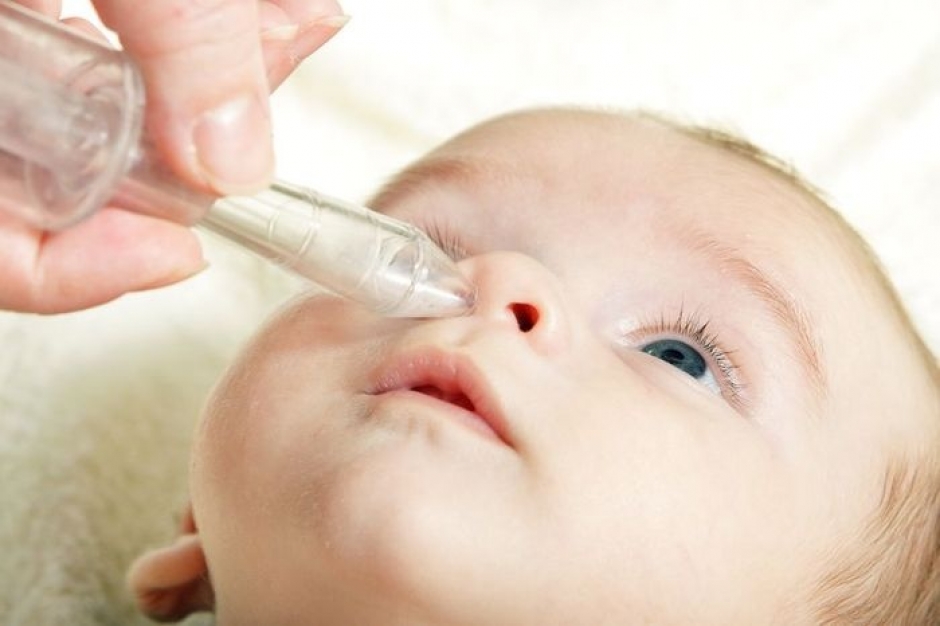
Very effective with such an ailment in infants - salt solution
- To prepare it, you need to mix a teaspoon of salt in a glass of boiled water
- With such a solution (2-3 drops) you need to rinse your child’s nose every 20-30 minutes. This will prevent drying out of the nasal mucosa.
- In addition, salt solution copes well with bacteria and viruses
- If a child in a runny nose proceeds with an increase in temperature, then he needs to give water separately from breast milk. A child from one month can be given dill water. It will not only improve digestion, but also help reduce body temperature
Do the baby bathe with a runny nose?
In order to correctly answer this question, it is necessary to find out the cause of the runny nose. If it is a physiological nature, then you can bathe a child.
Water procedures with infectious or viral runny nose are also shown if the body temperature remains at the normal level. But, if it is increased, it is strictly forbidden to bathe a child.
Important: you need to bathe a child with a runny nose in water 2-3 degrees higher than the usual temperature. But, at the same time, it should not be warmer than 33 degrees. Immediately after bathing the child, you need to wipe it, put on and put to bed.
Can I walk with a baby with a runny nose?
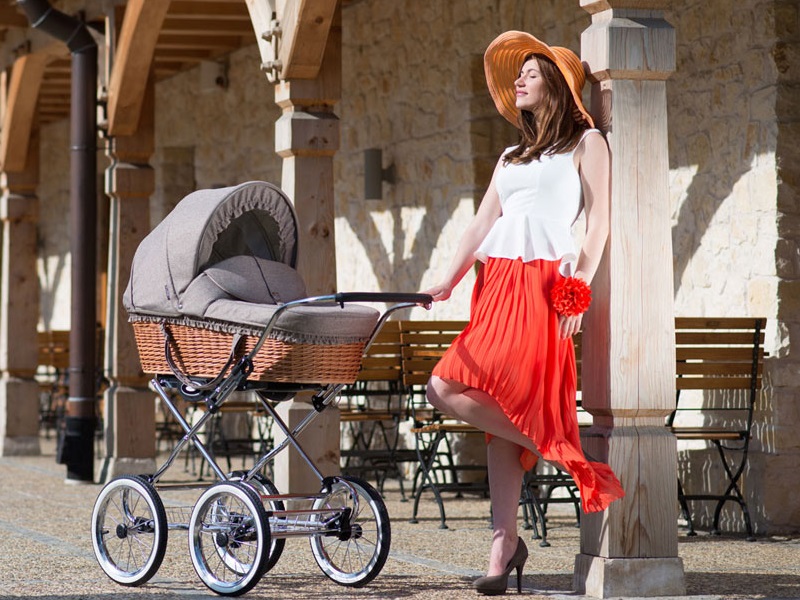
As in the case of bathing, you can walk with a runny nose
But, looking with which one. If the baby does not have high temperature and other signs of malaise to walk with him not only, but also necessary. Since one of the reasons for this ailment is dry stale air, walks on the street will help the child cope with a runny nose better than many medicines.
Important: the reason for the cancellation of a walk in the fresh air is not a runny nose, but the presence of SARS.
Hryminest of breast and newborns: advice to mothers
Anna. I have always been surprised by questions such as whether it was possible to walk with a runny nose. Why not? On the contrary, fresh air is very useful for the child, so if there is no temperature, then at the first signs of a runny nose, it is urgent to go to the street.
Kseniya. When she was breastfeeding and her daughter appeared a runny nose, the pediatrician said that I lay on vegetables and fruits. Vitamins and other compounds from them through milk will enter the child’s body and help its immune system will cope with the disease.
